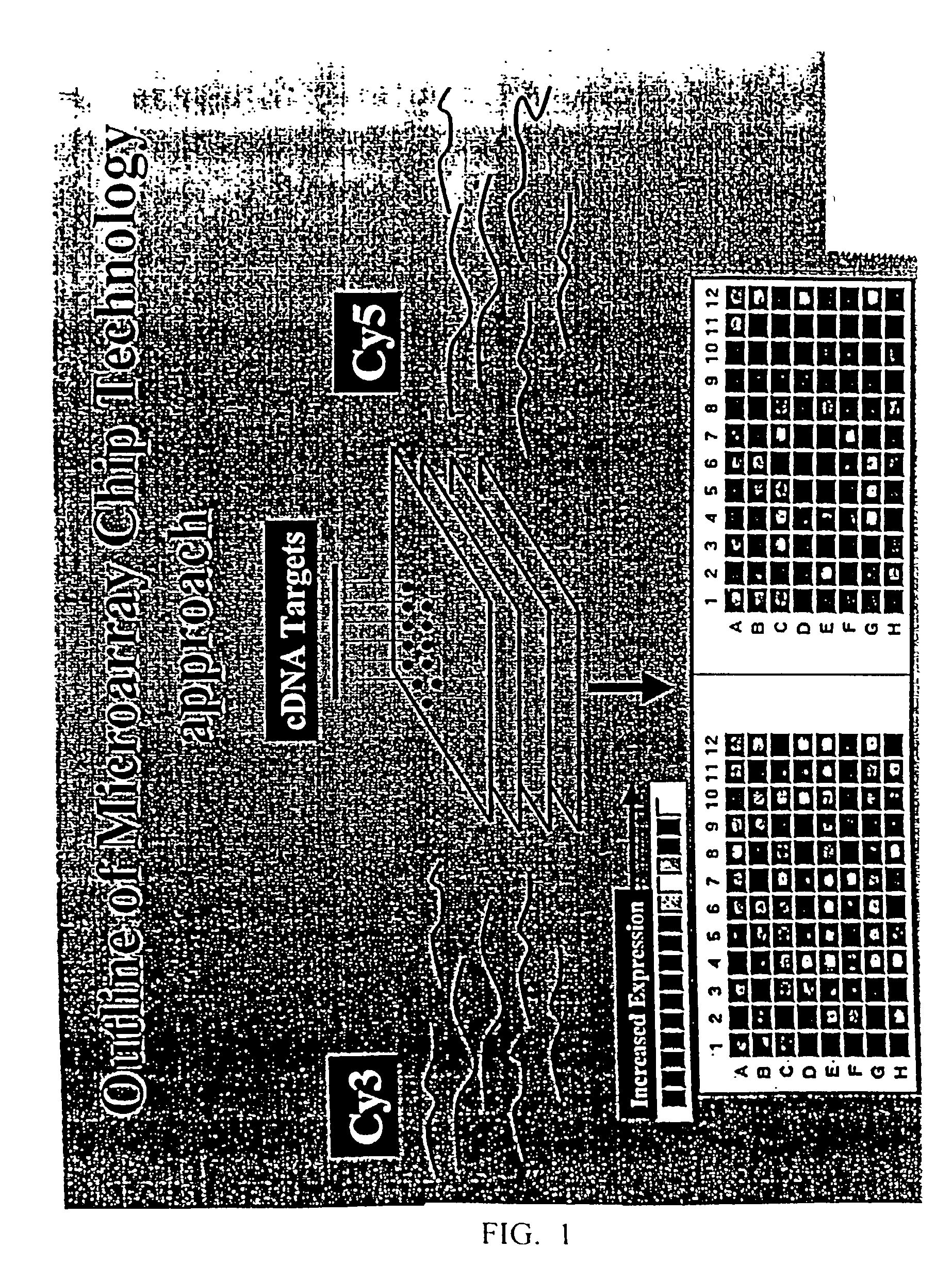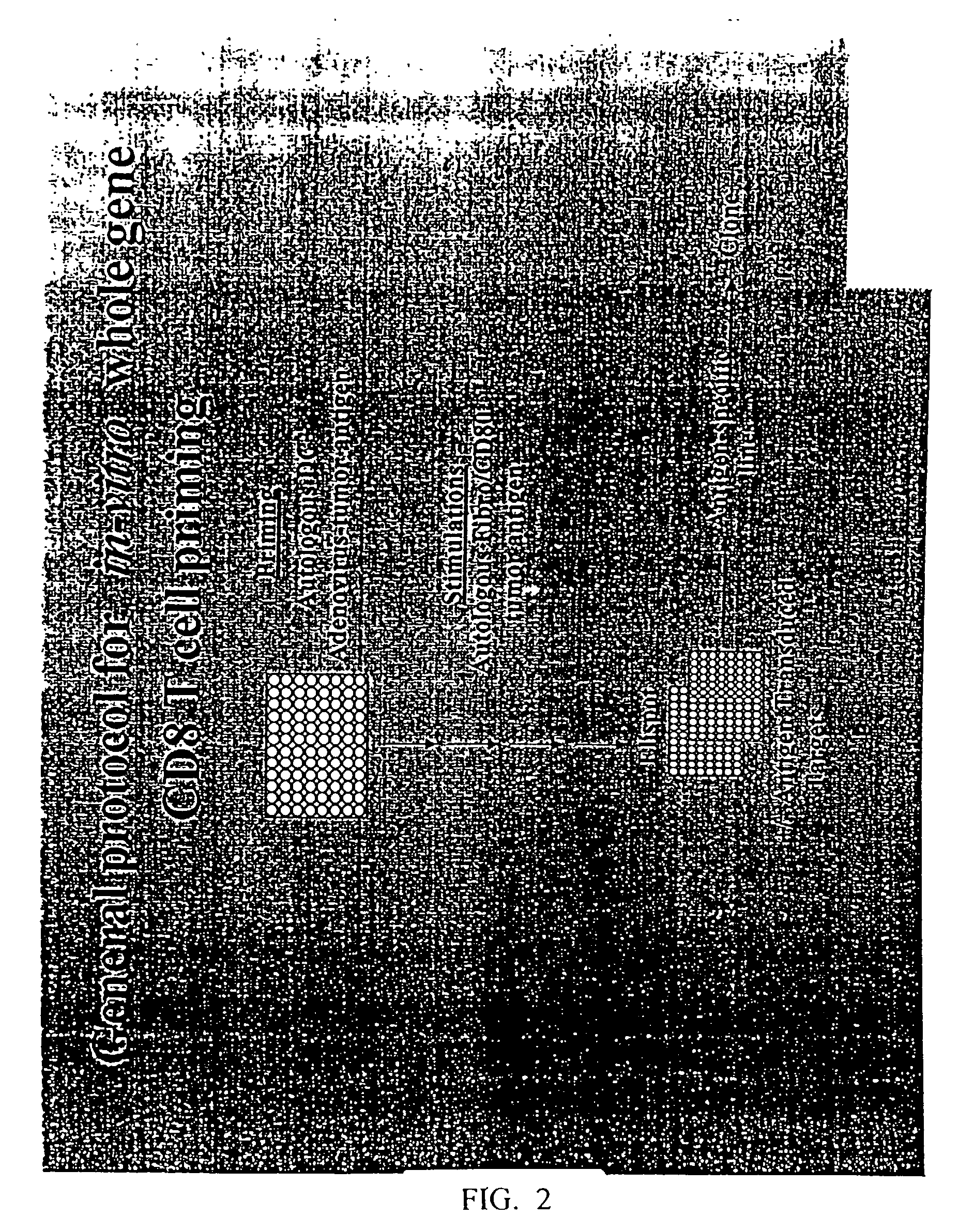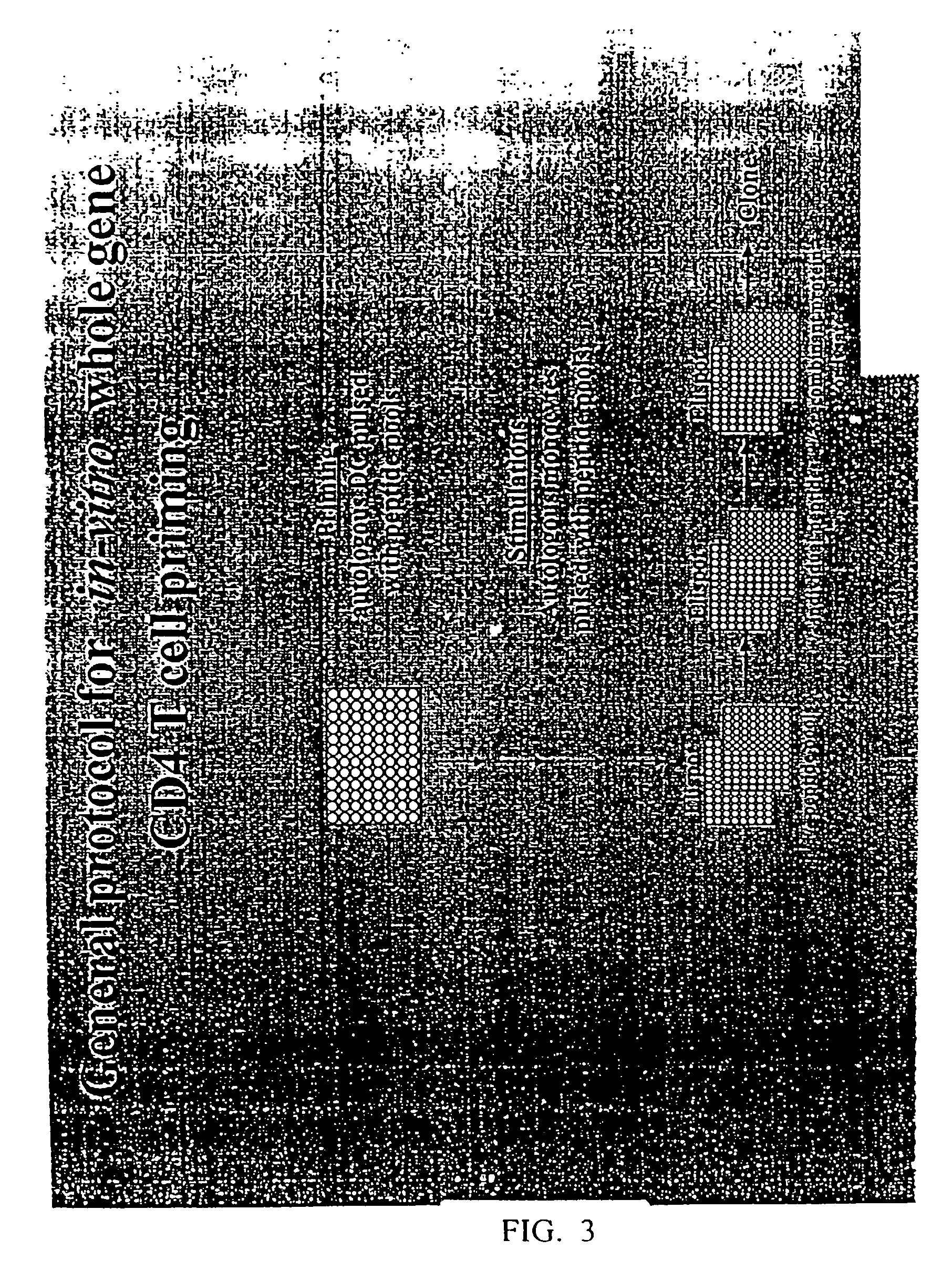Compositions and methods for the detection, diagnosis and therapy of hematological malignancies
a hematological malignancy and composition technology, applied in the field of cancer diagnosis and therapy, can solve the problems of bone marrow failure and organ failure, hematological malignancies with many complications, and the treatment of many hematological malignancies, including leukemia and lymphomas, remains difficul
- Summary
- Abstract
- Description
- Claims
- Application Information
AI Technical Summary
Benefits of technology
Problems solved by technology
Method used
Image
Examples
example 1
5.1 Example 1
Identification of Hematological Malignancy-Related Antigen Polynucleotides
[0536] This Example illustrates the identification of hematological malignancy-related antigen polynucleotides from non-Hodgkin's lymphomas.
[0537] Hematological malignancy-related antigen polynucleotides were isolated by PCR-based subtraction. PolyA mRNA was prepared from T cell non-Hodgkin's lymphomas, B cell non-Hodgkin's lymphomas and normal tissues. Six cDNA libraries were constructed, PCR-subtracted and analyzed. Two libraries were constructed using pools of three T cell non-Hodgkin's lymphoma mRNAs (referred to herein as TCS libraries). Two others were constructed using pools of three B cell non-Hodgkin's lymphoma mRNAs (referred to herein as BCNHL libraries). Two other libraries were constructed using a pool of 2 Hodgkin's lymphoma mRNAs (referred to herein as HLS libraries. cDNA synthesis, hybridization and PCR amplification were performed according to Clontech's user manual (PCR-Select cD...
example 2
5.2 Example 2
Analysis of subtracted cDNA sequences by Microarray Analysis
[0545] Subtracted cDNA sequences were analyzed by microarray analysis to evaluate their expression in hematological malignancies and normal tissues. Using this approach, cDNA sequences were PCR amplified and their mRNA expression profiles in hematological malignancies and normal tissues are examined using cDNA microarray technology essentially as described (Shena et al., 1995).
[0546] In brief, the clones identified from the subtracted cDNA libraries analyses were immobilized and arrayed onto glass slides as multiple replicas on microarray slides and the slides were hybridized with two different sets of probes, with each location on the microarray slide corresponding to a unique cDNA clone (as many as 5500 clones can be arrayed on a single slide, or chip). Each chip is hybridized with a pair of cDNA probes that are fluorescence-labeled with Cy3 and Cy5, respectively. The set of probes derived from the hematologi...
example 3
5.3 Example 3
Polynucleotide and Polypeptide Compositions: Brief Description of the cDNA Clones and Open Reading Frames Identified by Subtractive Hybridization and Microarray Analysis
[0548] Table 7 in co-pending application U.S. Ser. No. 09 / 796,692 lists the sequences of the polynucleotides obtained during the analyses of the present invention. Shown are the 668 polynucleotide sequences, along with their clone name identifiers, as well as the serial number and filing date of the priority provisional patent application in which the clone was first identified.
[0549] Table 8 in co-pending application U.S. Ser. No. 09 / 796,692 identifies the putative open reading frames obtained from analyses of the cDNA sequences obtained in SEQ ID NO:1-SEQ ID NO:668 in the co-pending application. Shown are the sequence identifiers, the clone name and translation frame, and the start and stop nucleotides in the corresponding DNA sequence used to generate the polypeptide sequence of the open reading frame...
PUM
| Property | Measurement | Unit |
|---|---|---|
| binding constant | aaaaa | aaaaa |
| pH | aaaaa | aaaaa |
| pH | aaaaa | aaaaa |
Abstract
Description
Claims
Application Information
 Login to View More
Login to View More - R&D
- Intellectual Property
- Life Sciences
- Materials
- Tech Scout
- Unparalleled Data Quality
- Higher Quality Content
- 60% Fewer Hallucinations
Browse by: Latest US Patents, China's latest patents, Technical Efficacy Thesaurus, Application Domain, Technology Topic, Popular Technical Reports.
© 2025 PatSnap. All rights reserved.Legal|Privacy policy|Modern Slavery Act Transparency Statement|Sitemap|About US| Contact US: help@patsnap.com



